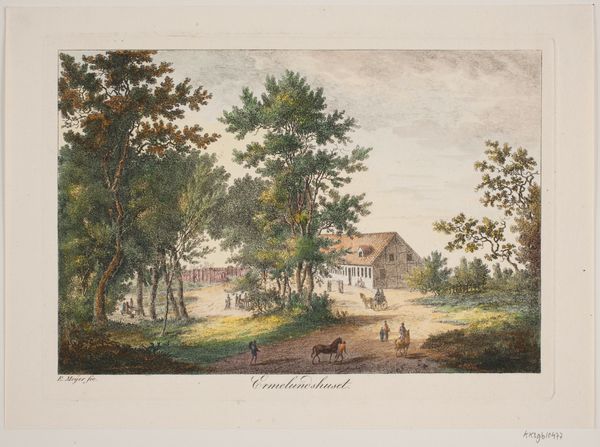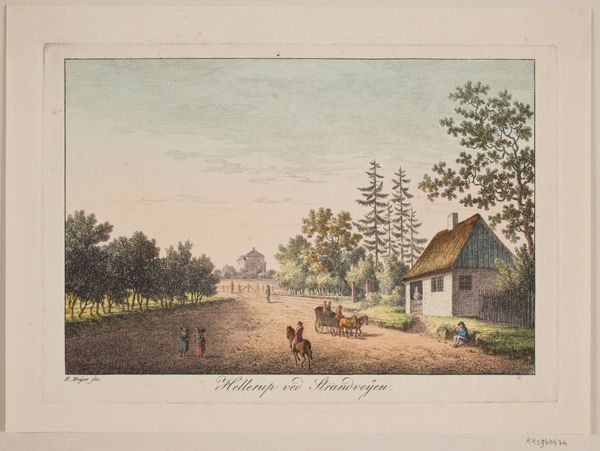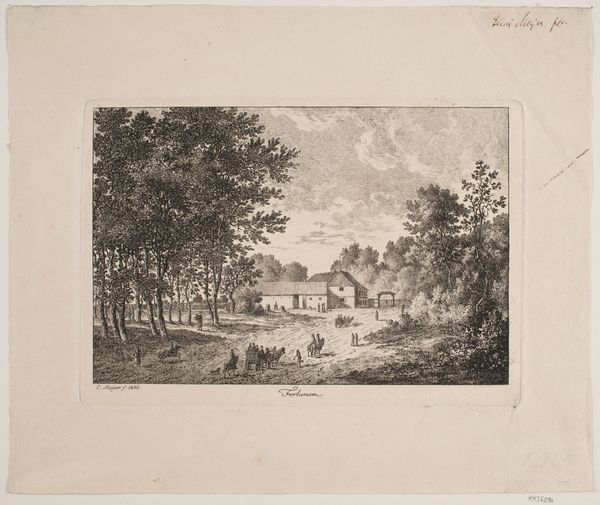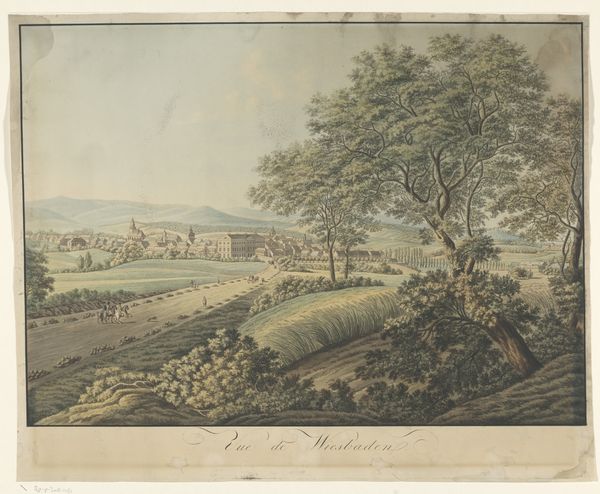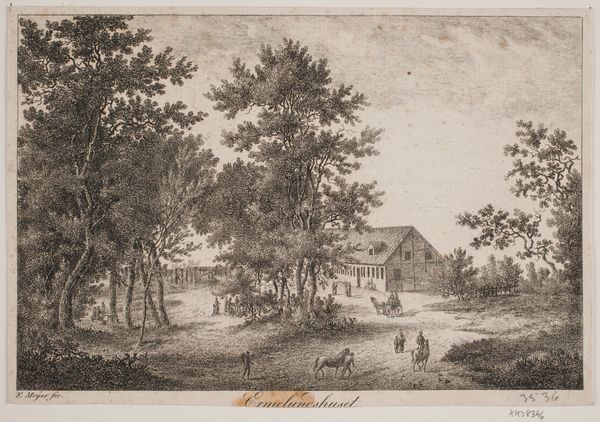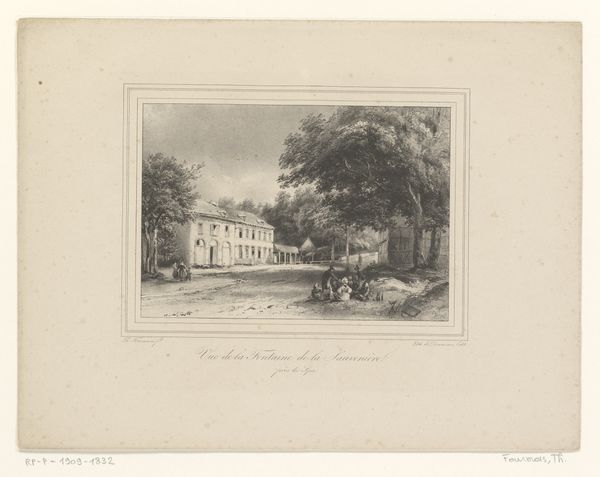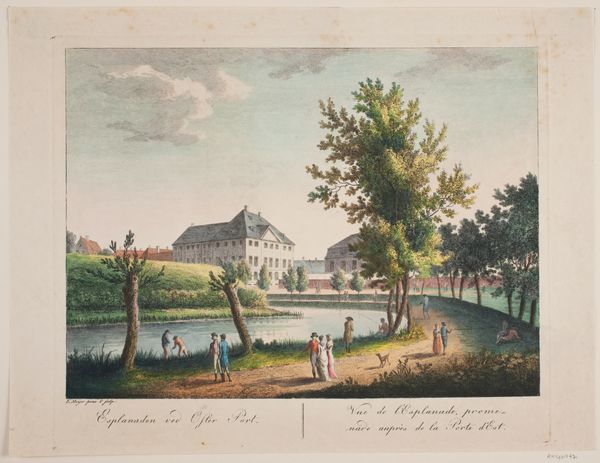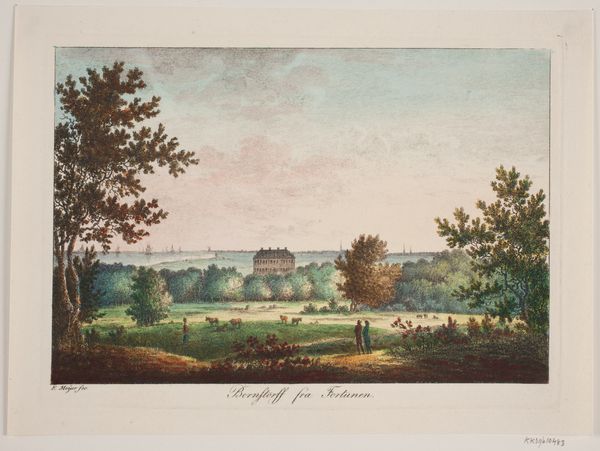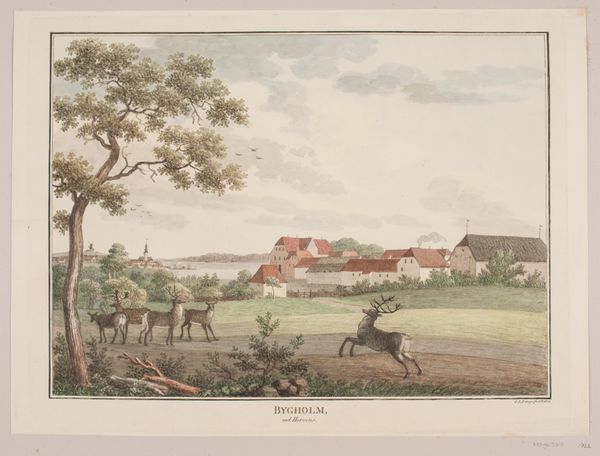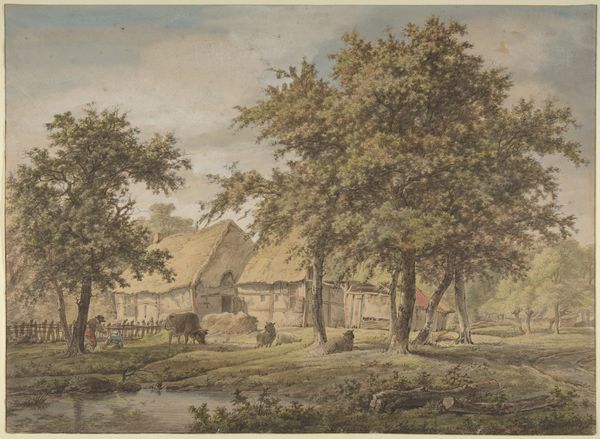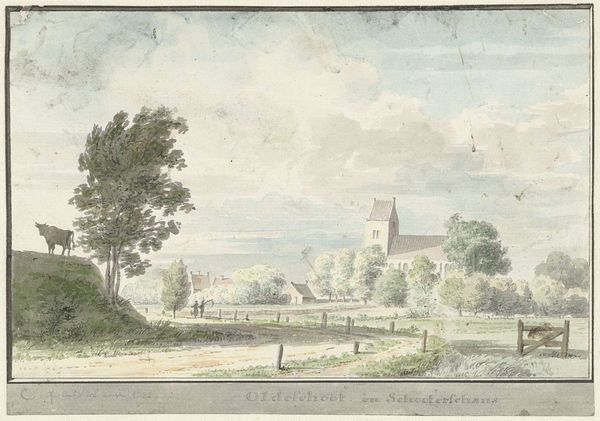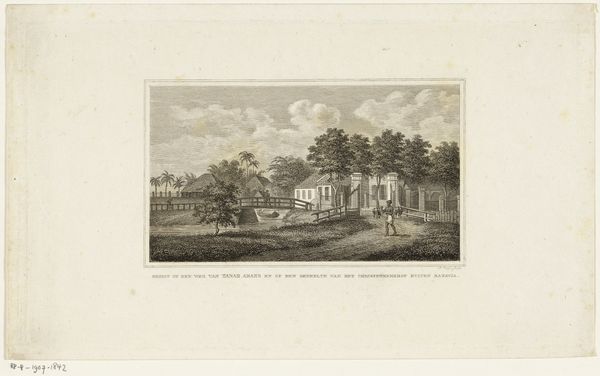
Dimensions: 140 mm (height) x 205 mm (width) (plademaal)
Curator: Here we have Elias Meyer's "Fortunen ved Dyrehaven," dating from 1763 to 1809, residing here at the SMK. It's a piece rendered in watercolor and engraving, offering a captivating vista. Editor: Gosh, look at how the light filters through the leaves! It's almost dreamy, like a memory half-recalled. The whole scene has a stillness to it, despite the figures bustling about. Curator: Precisely. Note how Meyer employs line and wash to construct the composition. The precise engraving delineates the architectural forms while the washes evoke atmosphere. Observe the receding plane—foreground trees to the structure to the background. Editor: And what’s striking is how balanced the whole composition feels; it’s like everything is carefully arranged to direct the eye. The building, though centrally positioned, doesn't dominate; the surrounding trees create this sense of harmony. Is it meant to be "fortunate", in some sense? Curator: Well, "Fortunen" is a specific place, an establishment at Dyrehaven. Considering genre painting as the broader context reveals a nuanced reflection of the socio-cultural norms as they stood during that epoch. It evokes pastoral scenes whilst implying mercantile actions. Editor: True. I get a sense of the artist both romanticizing rural life, with those horse-drawn carriages and leisurely figures, but also subtly commenting on this emerging commerce. It is beautiful. The softness of the watercolor blends the sharp lines of human creation. The sky, for example, seems endless; somehow the building is no more important than those trees. Curator: An apt observation. The use of engraving ensures replicability, democratizing access. Juxtapose this with the watercolor element. A limited palette unifies and signifies meaning and function through its deliberate manipulation of materiality. Editor: It almost feels melancholic somehow, capturing this moment in time which we can now see has vanished completely. Makes you think about impermanence and beauty, doesn't it? Curator: Indeed. Meyer's manipulation of artistic materials speaks volumes about the intricate dialogue between representation and society. Editor: For me, stepping back from it, it's about that tension: commerce versus nature. The known against the mysteries in life. It certainly has captured me.
Comments
No comments
Be the first to comment and join the conversation on the ultimate creative platform.
